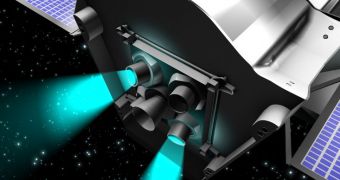The European Space Agency (ESA) has been working on a spacecraft bound for the innermost planet in our solar system for quite some time now, and finally preparations are starting to yield tangible results.
Spacecrafts that want to visit Mercury need to be built in a very special way, given the harsh conditions they will be subjected to when they reach the planet. Sunlight at that location is hot enough to melt lead, and around 10 times more intense than it is here.
BepiColombo was selected as the next ESA mission to Mercury some 11 years ago, but at the time no one knew what hurdles laid ahead for the project. Existing design standards and concepts had to be eliminated, and new ones created instead, in order to make the mission viable.
The thing that separates this spacecraft from the NASA Mariner 10 and MESSENGER probes is the fact that it is made out of two different components. These are the ESA Mercury Planetary Orbiter (MPO) and the Japan Aerospace Exploration Agency's Mercury Magnetosphere Orbiter (MMO).
The two will travel to Mercury propelled by the ESA-built Mercury Transfer Module (MTM). The JAXA MMO will be inserted in a highly elliptical orbit around Mercury, similar to the one MESSENGER is using.
But the ESA MPO will be inserted in a very tight, 400-by-1,500-kilometer orbit above the extremely hot surface of Mercury. The planet is tidally locked to the Sun, which means that it always keeps the same face oriented towards the star.
Due to its orbit, the MPO will at times need to endure temperatures reaching 450 degrees Celsius. This will happen as the orbiter moves in between the Sun and Mercury's heat-radiating surface.
“A considerable team of researchers was involved in making the mission feasible. An exceptional amount of technology development and demonstrations has been needed across a variety of fields,” explains the ESA BepiColombo project manager, Jan van Casteren.
“When you increase the light and heat intensities you are operating with 10 or 20 times compared to before, then failures can happen,” expert Christopher Semprimoschnig says of some of the challenges the BepiColombo team faced while developing the technologies needed for the mission to function.
“We had to deal with melted lamp holders, melted reflectors, but we gradually managed to build some representative simulation chambers like our Synergistic Temperature Accelerated Radiation (STAR) facility,” he concludes.
The expert holds an appointment as the head of the Materials Space Evaluation and Radiation Effects Section of the ESA Materials and Components Technology Division.

 14 DAY TRIAL //
14 DAY TRIAL //